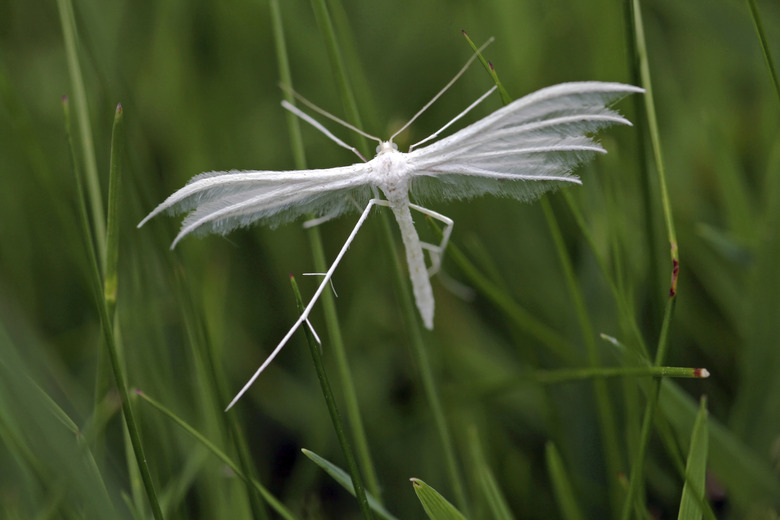Low-Flying Lawn Insects
Your lawn is a fitting habitat for many kinds of insects. It has countless hiding spaces for evading predators or ambushing unsuspecting ankles; it's full of food for herbivorous and carnivorous insects; it's an effective incubator of insect eggs, and it's a cozy nursery for developing young bugs. Lawns harbor several low-flying insect species. Some are helpful, and others are pests.
Step 1
Tiny, black and yellow frit flies lay eggs in a lawn, and their larvae feed on the turf. Small, dull-colored moths with snoutlike projections fly over lawn at dusk while depositing eggs. These eggs develop into sod webworms, which feed on the lawn, leaving brown patches. Insects that look like giant mosquitoes flying over your lawn are crane flies. The adults are harmless, but their larvae are common lawn-eating pests. Healthy lawns can tolerate frit flies, webworms and crane flies. If an infestation of crane flies and webworms is severe, then parasitic nematodes (Steinernema spp.) can be applied to the lawn to target both of the pests. Follow the product instructions for mixing and applying nematode treatments. Typical mixtures require mixing 1 teaspoon of the nematode concentrate in 1 gallon of water. Spray the lawn with the mixture while constantly shaking the sprayer to maintain an even distribution of nematodes. Keep the lawn moist for the next week for the nematodes' full effectiveness.
Step 2
- Tiny, black and yellow frit flies lay eggs in a lawn, and their larvae feed on the turf.
Helpful Predators
Step 1
Some insects fly low over a lawn to look for other insects to eat. Large, hairy scoliid wasps search a lawn for grubs on which to lay eggs. When the wasp eggs hatch, the larvae feed on grubs, helping to reduce the numbers of those pests. Smaller parasitic wasps target several kinds of soft-bodied lawn pests. Ladybugs, on the other hand, often fly over and live in lawns, where both their adult and larval forms feed on plant-eating aphids and other bugs. In order to maintain healthy populations of beneficial insects, avoid using insecticides on your lawn.
Biting Pests
Step 1
Mosquitoes and biting midges, commonly called "no-see-ums," are among the biting insects that fly low. Adult mosquitoes fly above and take shelter in a lawn and other foliage. Control lawn mosquitoes by removing all items that accumulate standing water; those items include birdbaths, toys, tires and gutters. Biting midges are less than 1/16 inch long and inflict a painful bite. Like mosquitoes, they breed in moist areas. Dressing in a long-sleeved shirt and long pants is the best defense against biting midges.
Step 2
- Some insects fly low over a lawn to look for other insects to eat.
- Adult mosquitoes fly above and take shelter in a lawn and other foliage.
Harmless Lawn Bugs
Step 1
Thrips — tiny insects with four fringed wings — often fly over lawns but do not damage them. You also may notice various fly species in your lawn, but they are not typically lawn pests or predators. When flying, they usually are searching for a food or egg-laying source, such as fallen fruit, animal droppings or small, dead animals.
References
- University of Tennessee Agricultural Extension Service: Lawn Insects — How to Control Them
- Pennsylvania State University, College of Agricultural Sciences: Sod Webworms in Home Lawns
- University of Florida IFAS Extension, Manatee County: The Master Gardening Bench, November 2012
- University of Arizona Cooperative Extension, Yavapai County: Coping with No-See-Ums
